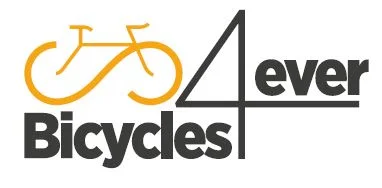Get More For Less | Free Hacks To Make You More Efficient On The Bike with GCN
Source: GCN Youtube Channel: Get More For Less | Free Hacks To Make You More Efficient On The Bike
Video Get More For Less | Free Hacks To Make You More Efficient On The Bike with Global Cycling Network
Video Get More For Less | Free Hacks To Make You More Efficient On The Bike with Global Cycling Network YouTube Channel.
Get More For Less | Free Hacks To Make You More Efficient On The Bike
Global Cycling Network: Efficiency is Key
In the world of cycling, efficiency is key. How you ride, the style in which you pedal, and the strategy you employ can make a massive difference in energy expenditure. To demonstrate this, a test was set up by the Global Cycling Network, where experienced cyclist Connor was tasked with completing a 6 km route in two different ways. The first run saw Connor riding as inefficiently as possible, sprinting out of corners, pushing hard on climbs, and overall wasting energy. The second run focused on riding as efficiently as possible, maintaining an arrow position on the bike, taking smooth lines around corners, and conserving energy where possible. Despite having to maintain the same average speed for both runs, the difference in energy expenditure was significant.
Efficiency vs. Inefficiency: The Results
In the first run where Connor rode as inefficiently as possible, pushing hard and wasting energy, his power output averaged at 231 Watts. The ride was challenging, with constant sprints and inefficient riding tactics leading to fatigue. However, when Connor focused on riding efficiently in the second run, his power output dropped to 183 Watts, a 25% decrease from the first run. This drastic reduction in power expenditure highlights the impact of riding style and strategy on energy efficiency.
Factors Affecting Energy Expenditure
Two main factors played a significant role in the energy savings achieved during the efficient ride. The first factor was strategic planning and anticipation of the road ahead. By looking ahead, identifying terrain features such as climbs and corners, and adjusting pace and strategy accordingly, Connor was able to optimize his energy output. Maintaining speed into climbs, avoiding unnecessary accelerations, and making the most of descents all contributed to energy savings.
The second factor was rider position and riding technique. By reducing his profile on the bike, getting low and aerodynamic, Connor was able to cut down on wind resistance and save watts. Additionally, riding smoothly and steadily, avoiding sudden spikes in power output, further helped conserve energy. These two factors, when combined, resulted in a significant improvement in energy efficiency during the second run.
Takeaways for Cyclists
The test conducted by the Global Cycling Network serves as a valuable lesson for cyclists looking to improve their performance and efficiency on the bike. By implementing the following tips, riders can save energy and enhance their overall riding experience:
1. Plan Ahead: Look ahead on the road, anticipate terrain features, and adjust your pace and strategy accordingly.
2. Maintain Speed: Make the most of your speed on all sections of the course, especially before climbs and during descents.
3. Ride Efficiently: Focus on reducing wind resistance by adopting an aerodynamic position on the bike and avoiding sudden power spikes.
4. Be Strategic: Choose the best line through corners, plan your approach to climbs, and conserve energy whenever possible.
5. Smooth Riding: Ride steadily and smoothly, avoiding unnecessary accelerations and maintaining a consistent cadence.
6. Learn from Experience: Reflect on your rides, analyze your performance, and make adjustments to improve efficiency and save energy.
By incorporating these tips into their riding routine, cyclists can maximize their energy efficiency, enhance their performance, and enjoy a more enjoyable and rewarding cycling experience.
Conclusion
Efficiency is a crucial factor in cycling performance, and small changes in riding style and strategy can lead to significant energy savings. By focusing on planning ahead, maintaining speed, riding efficiently, being strategic, riding smoothly, and learning from experience, cyclists can optimize their energy expenditure and improve their overall performance on the bike. The test conducted by the Global Cycling Network demonstrates the impact of efficiency on energy output and serves as a valuable lesson for cyclists looking to enhance their riding experience. By implementing these tips and techniques, riders can elevate their cycling game, save energy, and enjoy the benefits of a more efficient and enjoyable ride.
The opinions expressed in this space are the sole responsibility of the YouTube Channel Global Cycling Network and do not necessarily represent the views of Bicycles4ever Cycling Culture.

